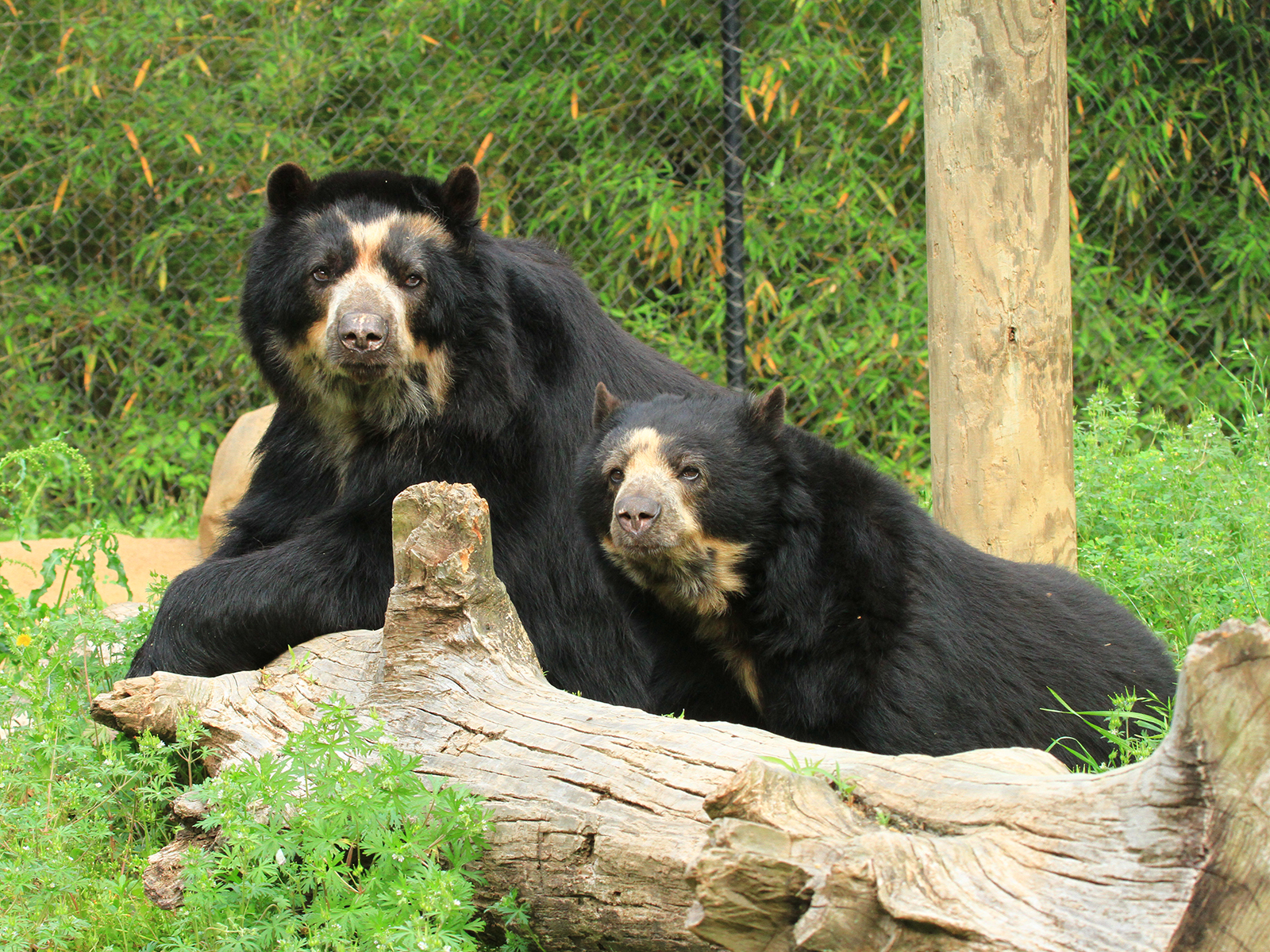Andean Bear
Tremarctos ornatus
Class
Mammalia
Order
Carnivora
Family
Ursidae
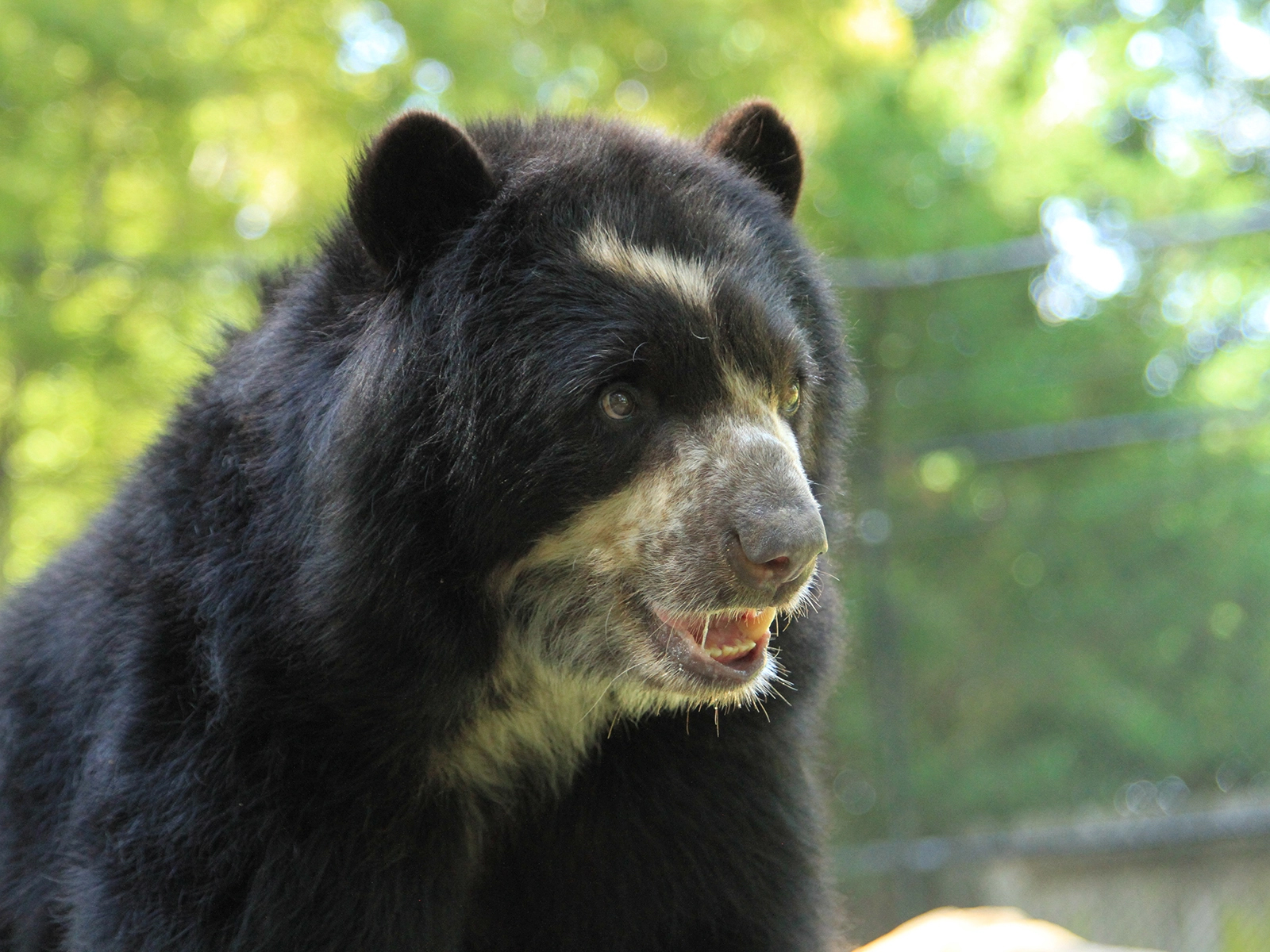
Mammalia
Carnivora
Ursidae
Western Venezuela south to Bolivia
Length: 5.5 - 6.5 ft.
Female Weight: 132 - 176 lbs
Male Weight: 220 - 386 lbs
In the Andes and outlying mountain ranges; forests, grasslands, and scrublands
1-2 cubs; rarely 3
Gestation: 65 days (female bears experience delayed implantation)
Fruits and bromeliads; berries, grasses, bulbs, cactus flowers, insects, and small animals such as rodents, rabbits, and birds
Vulnerable
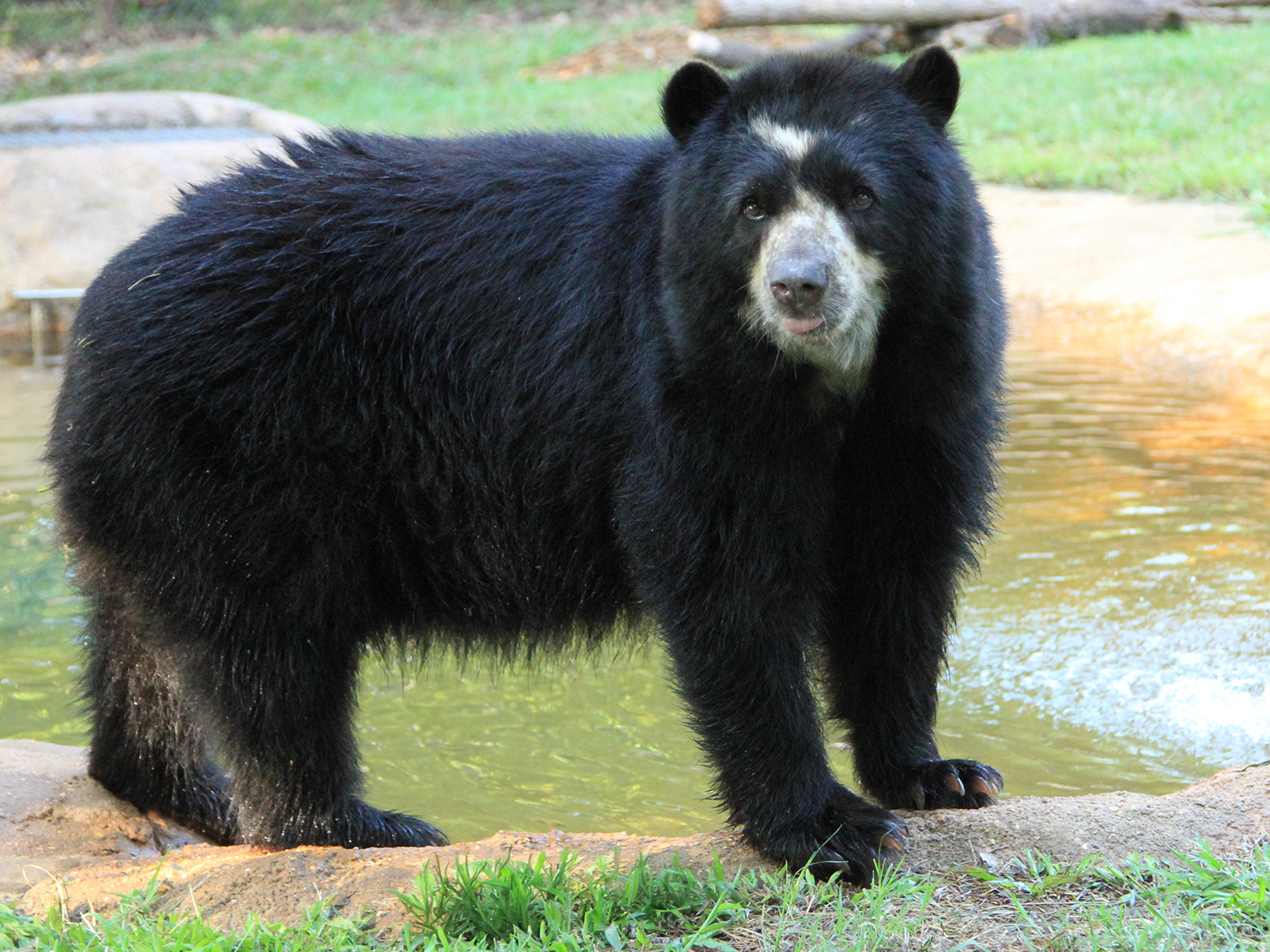
The Andean bear, also know as the spectacled bear, is the only species of bear found in South America. They are true arboreal bears, using their long, sharp front claws to climb and forage for food. They are also good swimmers. Andean bears have only 13 pairs of ribs, one fewer than other bear species.
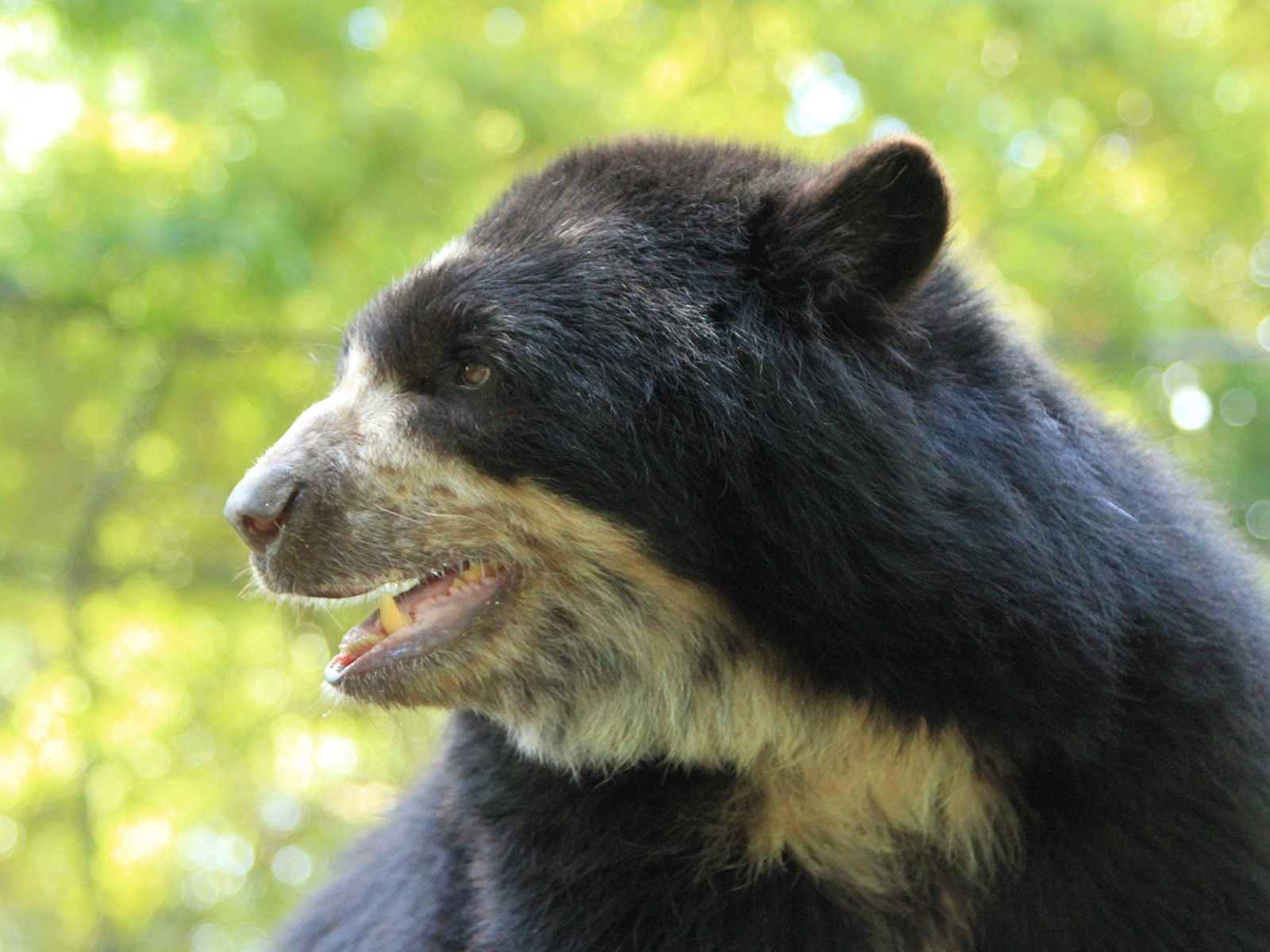
The markings on an Andean bear's head, throat, and chest are unique to each individual, like a human's fingerprint. They are thought to use vocal communication more than any other bear except the giant panda. They make a range of sounds from a soft, purring sound to a shrill screech.
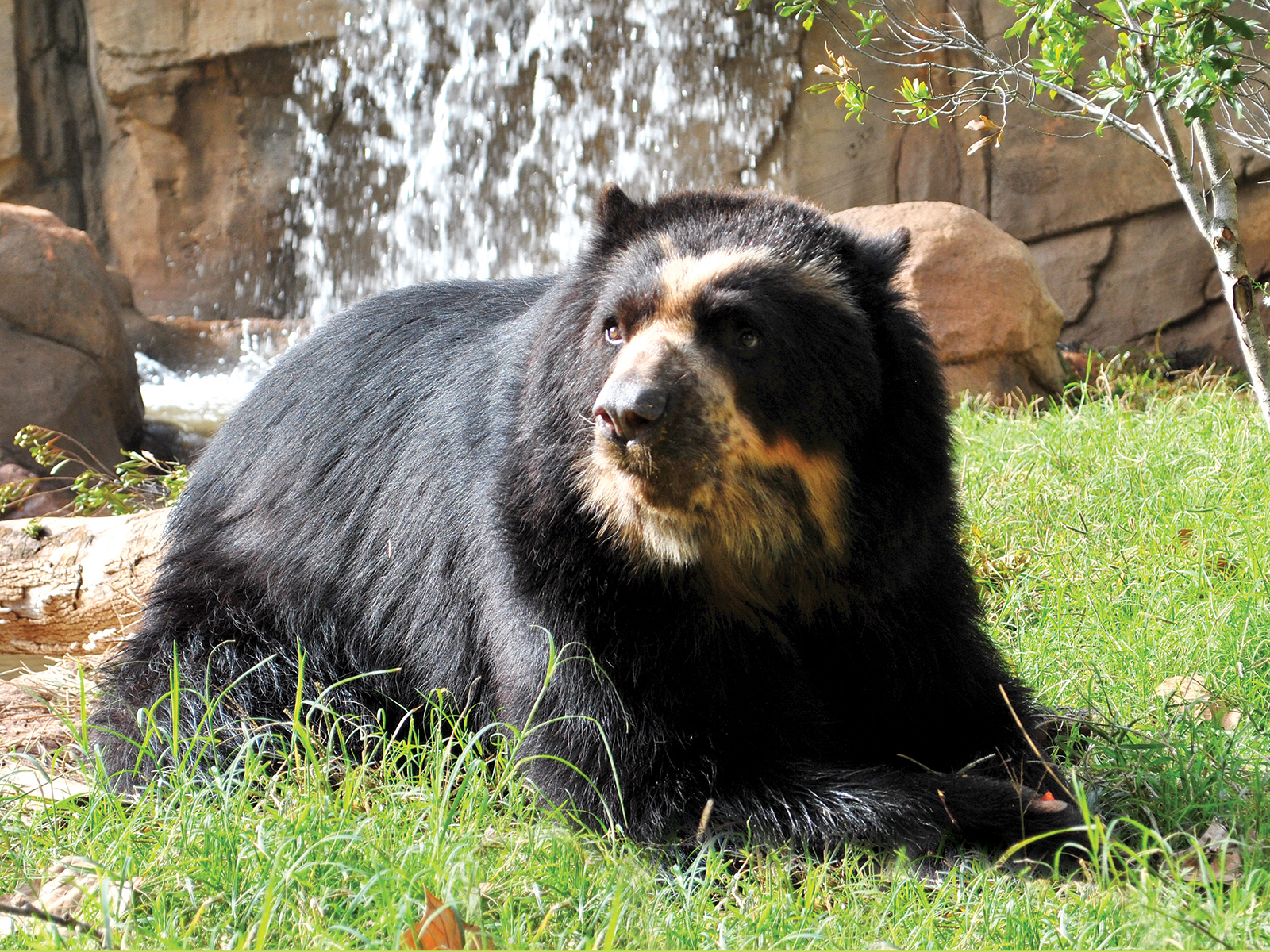
Andean bears are omnivores, known to eat more than 300 different kinds of plants and over 20 kinds of animals. The most common items in their diet appear to be plants, especially fruits, palms, and bromeliads. By eating fruit and dispersing seeds in their droppings over wide areas, Andean bears act as crucial "gardeners," helping to plant new trees and maintain the health and diversity of the forest.
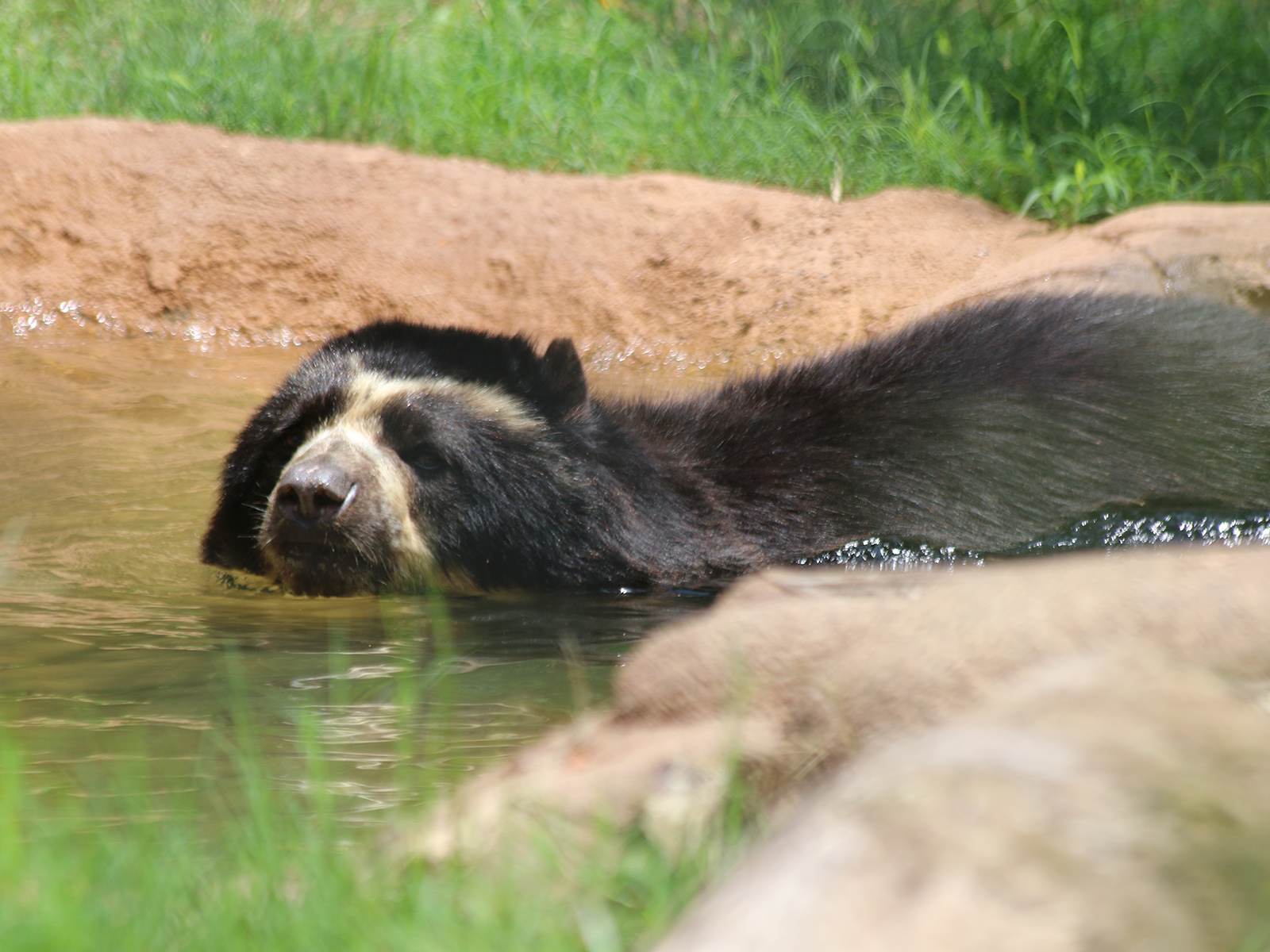
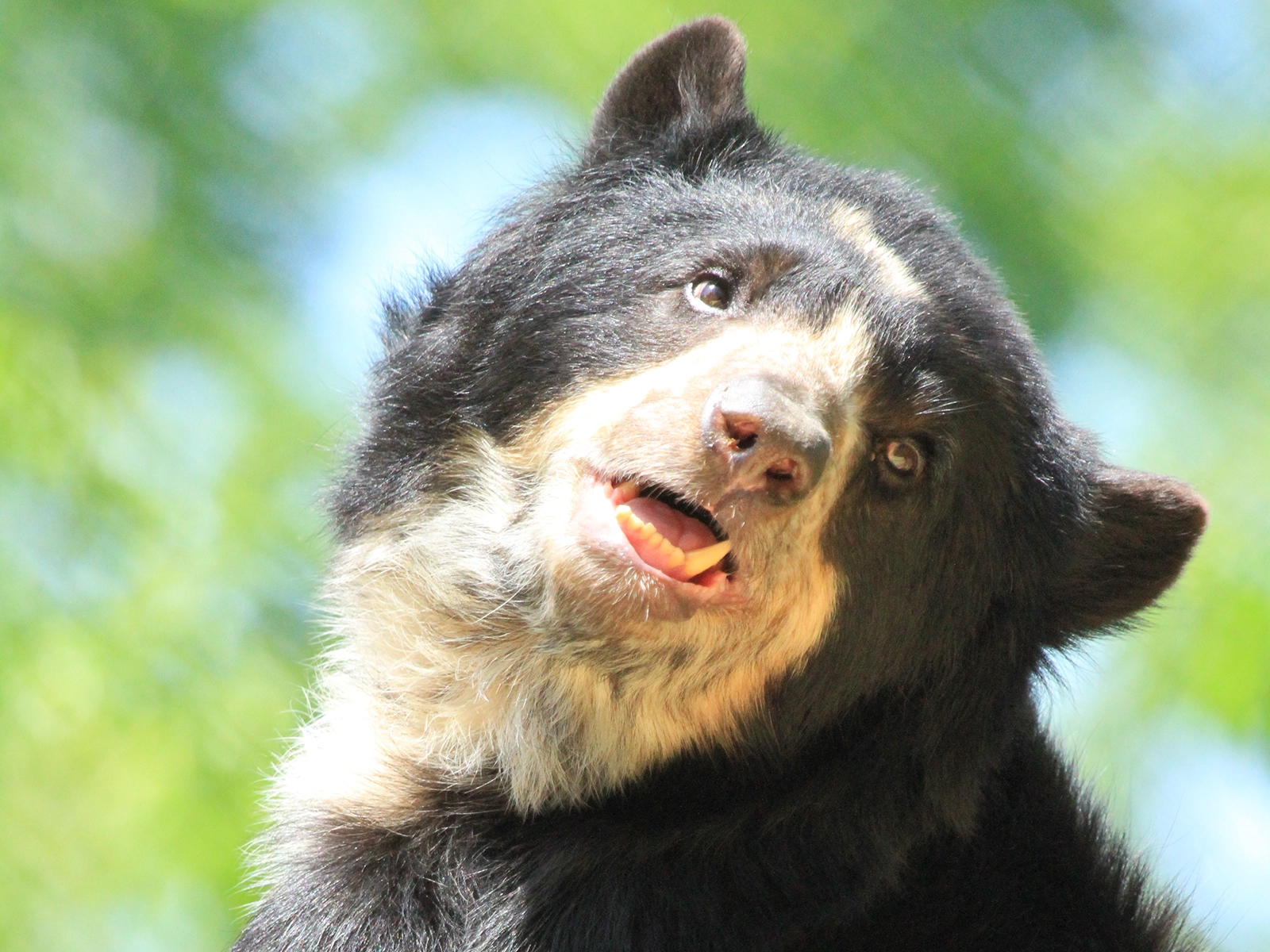
Chaska was born on January 15, 2010, at the Smithsonian's National Zoo. She is the mother of four cubs — two singletons and a set of twins, born while she was at Salisbury Zoo.
She ia a bear with a distinct personality and discerning tastes. She has a particular fondness for culinary delicacies such as honey, watermelon, avocado, and fish. An avid swimmer, she often spends her days enjoying her pool or engaging with enrichment activities, especially when they're filled with her favorite snacks. For moments of relaxation, Chaska can be found napping on her platform or delighting in her unique hobby: engaging with novel scents — the more pungent the perfume, the better.
The Andean bear population is in decline due to habitat loss and fragmentation, human-wildlife conflict, and poaching.
Conservation organizations and local governments are working to protect these bears by establishing protected areas, creating biological corridors, working with local communities to mitigate conflict, and conducting further research to better understand and protect this iconic South American species.
Donate to FOTAZ: Friends of the Alexandria Zoo contributes funds each year to Zoo Conservation Outreach Group (ZCOG), a non-profit coalition of zoos, aquariums, and related partners committed to promoting wildlife and habitat conservation throughout the Americas.
Purchase Sustainably Produced Products: Look for certified shade-grown or "bird friendly" coffee, as these products are grown in a way that minimizes impact on the environment.
Consume Less: The demand for resources often leads to deforestation and habitat loss. By buying only what you need and looking for pre-owned or repurposed items, you can help reduce this demand.
